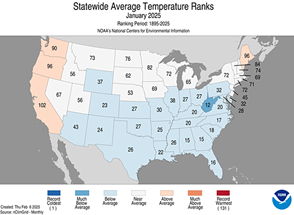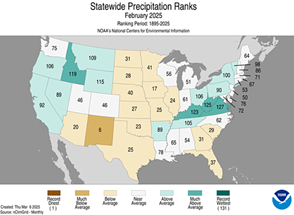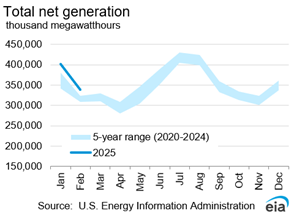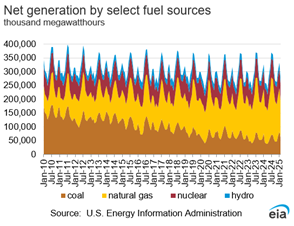Us Energy Information Administration Monthly Energy Review March 2018
Highlights: January 2022
-
Cold weather led to 52-calendar week high wholesale electricity and natural gas prices in New England and New York City.
-
Fuel oil in the Northeast gained a sizeable share of fossil fuel consumption in January 2022, mainly at the expense of natural gas.
-
The toll of natural gas at New York Metropolis ($104.25/MWh) saw a significant increase from the previous month ($29.85/MWh), and was well above the cost of Central Appalachian coal ($41.39/MWh) during January 2022.
Key indicators




Average residential electricity expenditures increased in nominal terms from 2020 to 2021, largely due to higher fuel prices

Source: U.S. Energy Information Administration, Form Environmental impact assessment-861M, Monthly Electric Power Industry Report and Grade Eia-861, Annual Electrical Power Industry Report. The Consumer Price Index deflators are from the Federal Reserve Bank of St. Louis.
Based on preliminary data, the average nominal monthly electricity expenditures for residential customers in the United States increased iv.3%, or approximately $v, from $117 in 2020 to $122 in 2021. This increase was the 2d-largest year-over-twelvemonth nominal increase in the past decade; only the 2017 to 2018 increase was larger. This increase corresponded with an 85% increase in delivered natural gas expenditures to the electric power sector. Yet, as overall consumer prices increased at a slightly higher charge per unit (4.7%), real (aggrandizement adapted) boilerplate expenditures brutal slightly from $123 in 2020 to $122 in 2021 (in constant 2021 dollars).
Monthly electricity expenditures reflect both electricity prices and the corporeality of electricity a customer consumes. We practice not direct collect electricity prices, merely we practice collect electricity acquirement which, when divided by residential electricity consumption, can produce a proxy for price. In 2021, boilerplate residential prices increased more than residential consumption. The average U.S. nominal residential cost rose from thirteen.sixteen cents per kilowatthour (kWh) in 2020 to xiii.73 cents/kWh in 2021, a four.3 % nominal increase. The average monthly consumption per residential customers for 2021 was 886 kWh—a pocket-size increment (0.5%) from the 2020 average monthly value of 882 kWh.
Regional fuel toll dynamics as well as weather patterns tin strongly influence changes in boilerplate residential expenditures from year to year at the land level. Average monthly nominal residential electricity expenditures increased in 45 states relative to 2020. The highest percentage increment was in Oklahoma (22.iv%), which was due, in function, to the February 2021 winter storm that drove up natural gas and electricity prices and put significant costs on utilities in the state. Louisiana and Arkansas had the adjacent greatest increases at thirteen.5% and 12.8%, respectively. The costs of delivered natural gas to the electric power sector in the West South Central region (where Louisiana and Arkansas are located) increased 186% year over year.
Boilerplate monthly residential electricity expenditures decreased in five states in 2021. Three of the five states (Connecticut, Vermont and Rhode Isle) are in New England, which experienced a milder summer than average. The other two states (Arizona and Nebraska) both had a milder winter and summer in 2021 relative to 2020.

Source: U.Southward. Free energy Information Assistants, Form Environmental impact assessment-861M, Monthly Electric Power Industry Report and Course Environmental impact assessment-861, Almanac Electric Power Industry Report.

Source: U.S. Free energy Data Administration, Form Environmental impact assessment-861M, Monthly Electric Ability Manufacture Written report and Form EIA-861, Annual Electric Power Industry Report.

Source: U.S. Free energy Data Administration, Form EIA-861M, Monthly Electric Power Industry Report.

Source: U.S. Energy Information Administration, Form EIA-861M, Monthly Electric Power Manufacture Study and Course EIA-861, Almanac Electrical Ability Industry Report.
Electricity usage varies across regions due to regional climatic weather condition and beyond time due to general conditions trends and changes in energy efficiency. Both heating degree days (HDDs) (+1.iii%) and cooling degree days (CDDs) (+0.6%) were upwards in 2021 compared with 2020, which increased average residential consumption levels in 2021. The increase in boilerplate consumption contrasts with recent trends in free energy efficiency that have tended to decrease boilerplate consumption over time. These trends in free energy efficiency include increased use of behind-the-meter generation, high-efficiency appliances, LED lights, and smart energy-saving devices. Since 2011, average monthly electricity consumption per customer has fallen past 5.3% (934 kWh in 2011 versus 886 kWh in 2021).
| State | | | | |
|---|---|---|---|---|
| Hawaii | | | | |
| Connecticut | | | | |
| Alabama | | | | |
| Due south. Carolina | | | | |
| Mississippi | | | | |
| U.S. AVG | | | | |
| Utah | | | | |
| N. Mexico | | | | |
| D.C. | | | | |
| Colorado | | | | |
| Illinois | | | | |
| Source: U.S. Free energy Data Assistants, Class EIA-861M, Monthly Electric Ability Industry Written report | ||||
The five states with the highest average monthly residential electricity expenditures in 2021 also ranked in the top five in 2020. Hawaii, at $177.64, again had the highest state average monthly expenditures in 2021. Hawaii'due south expenditures are high because of the state'due south significant use of imported petroleum. Connecticut, with the 2d-highest expenditures ($155.79), had fairly depression average consumption levels (712 kWh), merely it had higher-than-average prices averaging 21.96 cents/kWh. The higher electricity rates in Connecticut are typical of New England where prices tend to exist college considering of constraints on natural gas pipeline capacity during peak demand periods and a generally college cost-of-living in this region. The remaining states in the top five (Alabama at $150.51, South Carolina at $142.83, and Mississippi at $138.07) are all located in the Southeast where they accept lower-than-boilerplate prices merely higher than average consumption levels due to high summer cooling demand.
The five states with the lowest monthly expenditures in 2021 were Utah ($82.30), New Mexico ($90.26), the District of Columbia ($92.74), Colorado ($95.13), and Illinois ($96.88). All five of these states had lower-than-average consumption levels. Utah had lower-than-boilerplate electricity prices while the other four states take prices that are closer to the national average.
Source: https://www.eia.gov/electricity/monthly/update/
Post a Comment for "Us Energy Information Administration Monthly Energy Review March 2018"